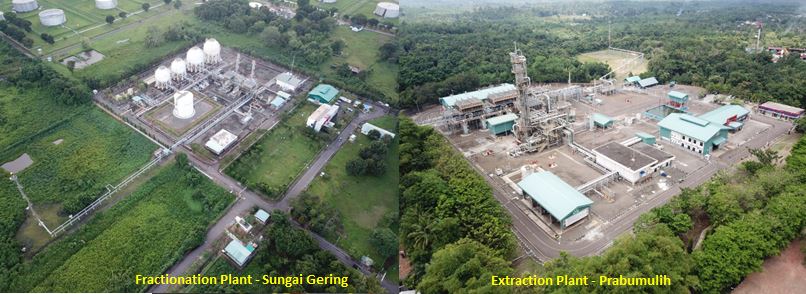
QHSSE & PROCESS SAFETY GOLDEN RULES
To implement the QHSSE & Process Safety Management System in the company’s operation areas, Top Management and all workers of PT Perta-Samtan Gas set QHSSE & Process Safety Golden Rules as the Best Working Practices that must be implemented in PT Perta-Samtan Gas operations areas.
QHSSE & Process Safety Golden Rules consists of :
- Obedient
Comply with all Company Regulations and QHSSE & Process Safety Aspects in the Company’s operation areas.
- Intervention
Report and intervene in unsafe acts and conditions at work.
- Care
Mutually care about the environment
The implementation of QHSSE & Process Safety Golden Rules at the workplace is compulsory for Management and each workers. Things to be noticed are:
- All works that will be performed must have been identified, risk controlled, and risk mitigation planned that can occur based on the potential magnitude of the risk.
- All workers who do their work, do understand the works, know the works risks, and know how to control the risks of the works.
- Use personal protective equipment (APD) appropriating the type of work.
- Inspect the equipments and tools before they are used and ensure the equipments and tools are safe during
- Make an emergency response plan before doing the work
- Every worker must stop unsafe condition or unsafe work and report to the supervisor or related function in the workplace.
QHSSE & PROCESS SAFETY LIFE SAVING RULES
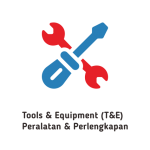
Make sure the equipment is appropriate and feasible to use
1. Use of appropriate and feasible equipment is one of the keys of accident prevention
You are required to:
- Check all equipment before use and make sure the equipment used are in good condition and appropriate with the work done.
- Be wary of “dangerous areas” (line of fire), clamp point, and potential danger of cut and punctured when placing limbs
- Wear Personal protective equipment in accordance with the results of risk assessment and Job Safety Analysis (JSA)
- Do a Stop Work Authority (SWA) if you have any doubts about the safety of the job
Supervisors are required to:
- Ensure the appropriate equipment is available for the job
- Ensure all personnel involved in the work wear appropriate personal protective equipment
- Stop the work if it is not safe to implement
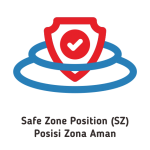
Place yourself in the safety zone from equipment movement
2. Working in a “line of fire” area of equipment movement (eg. cranes or other equipment) and energy equipment (rotary, electrical or highly pressurized equipment)
You are required to:
- Be sure to work in a location that is protected from mobile equipment
- Confirm precautions with supervisors while working near mobile equipment or energy equipment
- Follow the instructions from the rigger or the person in charge for the operation of the equipment
- Confirm with the supervisor or asset holder whether it is safe to enter and / or work in restricted zones
- Make sure that the driver of the moving vehicle sees you
Supervisors are required to:
- Ensure the access to the hazardous areas is restricted and barrier fitted
- Make sure only authorized personnel work in the zone
- Make sure that the method of signaling and communication is agreed and understood by everyone
- Ensure that the workplace is well-lit
- Make sure that the clothed clothes have scotlight (reflector)

Medium and high-risk works should be completed with a Safe Work Permit (SIKA)
3. Safe work permit (SIKA) must be made when doing medium and high risk works
You are required to:
- Ensure that SIKA is available, still valid and signed by authorized officer
- Understand all potential hazards and implement mitigation written in SIKA & JSA
- Have the appropriate competencies to perform the work at risk.
Supervisors are required to:
- Ensure that only competent workers perform risky works
- Ensure that SIKA is available, still valid and signed by authorized officer
- Make sure that the work location has been checked before the works start
- Communicate all potential hazards and mitigation plans written in SIKA & JSA to workers
- Stop work if changes occur and re-review to get a new SIKA
- Ensure after the job is finished entirely in safe condition
- Make sure that SIKA is closed when the work is done
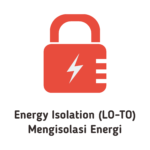
Check the isolation conditions before doing the work
4. Insulation will prevent you from exposure to potential hazards such as electricity, pressure, hazardous materials, toxic gases, chemicals, hot liquids or radiation. Specific protective equipment mentioned in SIKA, such as SCBA, electric sparks, or special clothing for handling chemicals
You are required to:
- Understand and adhere to equipment isolation systems
- Confirm to the supervisor or authorized official at the worksite that the isolation of equipment and work location has been applied
Supervisors are required to:
- Confirm that isolation has been applied, for example: the ignition source has been locked or washed the access door
- Ensure that there is no energy or potential other hazards are still stored
- Ensure that the worksites are safe to start work
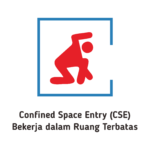
Make sure Activities in confined space are securely controlled
5. Activities at Confined Space have the potential danger of toxic gas contents, lack of oxygen, and explosive gases. Activities at Confined Space include: doing work activities in tanks, vessels, pipes
You are required to:
- Have the competence to work in Confined Space
- Comply with procedures & JSA and get approval from the Supervisor
- Bring communications equipment during inside the Confined Space
- Ensure that there is an Entry Watcher & Entry Supervisor before entering Confined Space
- Ensure that the personnel name & login time control are recorded
- Ensure that gas testing was carried out and declared safe before entering. Use the appropriate and feasible APD
Supervisors are required to:
- Ensure that the worker has the competence to work in Confined Space
- Ensure that SIKA is available and has been signed by the authorized officer before starting work
- Ensure that there is an Entry Watcher & Entry Supervisor before entering Confined Space
- Ensure that gas testing was carried out and declared safe before entering. Perform gas measurements before work, every 30 minutes once during work and 30 minutes after work is completed
- Make sure that the worksite is safe to work
- Ensure that the rescue equipment in confined spaces has been alerted

The lifting activity is carried out in accordance with the lifting plan and within a safe distance of the power line
6. Lifting activities, especially using heavy equipment such as cranes, have potential dangers to watch out for
You are required to:
- Have competence as a Lift Tool Operator
- Understand the lifting plan and how to carry it out during appointment activities
- Conduct lifting activities which does not exceed lift load capacity
- Ensure that the lifting equipment is in use condition and has a valid eligibility certificate
- Follow the cues given by the designated rigger or signal man if you are an operator
- Ensure to install a barrier lift area, so no one can cross the dangerous area
- Ensure the worksite is safe for lifting removal and avoid potential voltage hazards and unstable work areas
Supervisors are required to:
- Ensure the lifting plan is available, communicating so that it is understood by the personnel concerned
- Make sure that the barricade is installed
- Make sure that there is no one is walking on the load raised
- Ensure that the work area is safe for job execution
- Ensure that the Workers (Operator and Rigger) have the required competencies
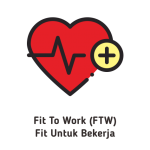
Ensure that each personnel must be fit and proper to work
7. The health level of the worker may affect safety in the performance of the work. Any worker who will work, especially for workers who perform high risk works are required to be in a “Fit” condition in accordance with their workload
You are required to:
- Perform Medical Check Up (MCU) in accordance with the potential hazards in the workplace and the predefined schedule (the maximum validity of MCU is one year)
- Report to the supervisor if they feel less fit to work
- Run a healthy lifestyle, so it can be maintained and fit when doing the job
Supervisors are required to:
- Ensure that each personnel perform MCU in accordance with the potential hazards in their work environment and according to the schedule set
- Ensure that every personnel is fit to work, especially for personnel performing high-risk jobs
- Prohibit personnel who does not have perform MCU or owns expired MCU, especially on high risk work
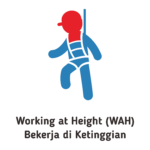
Wear full body harness while working at an altitude of more than 1.8 meters
8. Wear Full Body Harness While Working at Altitude more than 1.8 meters. To protect the workers, scaffolding is also required that has been inspected and declared safe
You are required to:
- Ensure that work permits at altitudes are available and signed by authorized officials
- Check the full body harness before wearing
- Wear full body harness correctly
- Make sure it is 100% tied off
Supervisors are required to:
- Ensure work permits to work at altitude are available
- Ensure the availability of full body harness in acceptable condition in accordance with the number of personnel
- Ensure that all tools to work at altitude (eg scaffolding, etc.) have been checked by competent personnel
- Make sure it is safe before doing the job
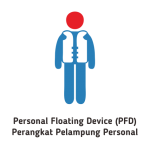
Wear floats while working in areas that have the potential danger of falling into the water
9. Buoys or other buoyancy aids should always be worn in areas that are identified having potential dangers of falling into the water to protect from possible drowning
You are required to:
- Wear buoys or other floating tools if there is a potential danger of falling into the water
- Wear buoys correctly according to their designations (eg appropriate size, fast fastened if required, etc.)
- Ensure that the buoy condition is acceptable and there is no damage before use
Supervisors are required to:
- In accordance with risk analysis, make sure it is known when and where the buoy should be used and make sure all team members know about it
- Ensure that buoys are inspected periodically
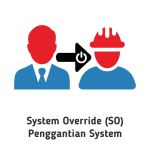
Do not neglect nor disable critical safety equipment before obtaining authorization from the competent authority
10. Critical safety equipment must be work properly to safeguard you
You are required to:
- Do not change or modify the critical safety equipment, because it can cause the equipment may not be work properly
- If changes were made, it must obtain approval from the supervisor or authorized officer before dismissing or deactivating critical safety equipment
Supervisors are required to:
- Identify critical safety equipment in your work area
- Ensure that the licensing was performed by officials with appropriate authorization levels
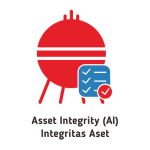
Ensuring the reliability of operating facilities
11. A reliable and well-maintained operation facility is one of the key safeguard operations
You are required to:
- Ensure that certificates are eligible to use / validity period.
- Ensure that that there is no apparent physical defects found
- Recognize the limits of equipment operation
- Communicate to the supervisor if abnormalities are found
Supervisors are required to:
- Ensure that all equipment has a license to operate
- Ensure maintenance of facilities is done according to schedule / condition
- Ensure that there is no abnormalities / abnormal conditions

Be sure to do the digging securely with written permission
12. At the excavation work, the workers must be obligated to implement the technical requirements of the safety aspect in accordance with the applicable laws and regulations
You are required to:
- Ensure that the excavation work permit has been approved and signed by the related function
- Identify underground installations such as power lines, instrument cables, gas pipes, etc. that may pose a hazard when performing the work.
- Inspect the equipment used for excavation
- Communicate to the supervisor if abnormalities are found
Supervisors are required to:
- Ensure that all equipment has a license to operate
- Make sure that the barricade is installed
- Ensure that there is no abnormalities / abnormal conditions
- Make sure that it is safe before doing the job

Make sure to drive the Vehicle safely & follow the rules & traffic safety
13. On driving activities, the driver must carry out the technical requirements of safety aspects of driving & traffic while driving the vehicle in accordance with the applicable traffic rules
You are required to:
- Make sure the drivers conditions is in good for driving, and the vehicles condition is worth using
- Ensure that the administration of driving is still valid such as driver’s license, vehicle registration, etc. and use safety belt for driver and all passenger
- Be sure not to call or receive calls while driving a vehicle
- Communicate to the supervisor if abnormalities are found
- Be sure to adhere to the safety of driving on the highway
Supervisors are required to:
- Ensure that all drivers are in top condition to drive a vehicle and administrative equipment driving on the highway is still valid
- Ensure that the condition of vehicles suitable for use and available P3K, APAR and other emergency equipment
The Consequences of Rules Violation
| Level | Description | Sanctions |
| Level 1 | Unintentional violation | Warning & refreshing training |
| Level 2 | Knowing but still violating | Dropped out temporarily from work site |
| Level 3 | Repeated violations | Dropped out permanently from work site |
HSSE Policies
PT Perta-Samtan Gas Goal & Target Managing QHSSE & Process Safety Excellence South Sumatera NGL Plant
PT Perta-Samtan Gas Process Safety Policy South Sumatera NGL Plant
PT Perta-Samtan Gas Excellence Environmental Management Policy South Sumatera NGL Plant
PT Perta-Samtan Gas QHSSE Excellence Management System Policy South Sumatera NGL Plant



